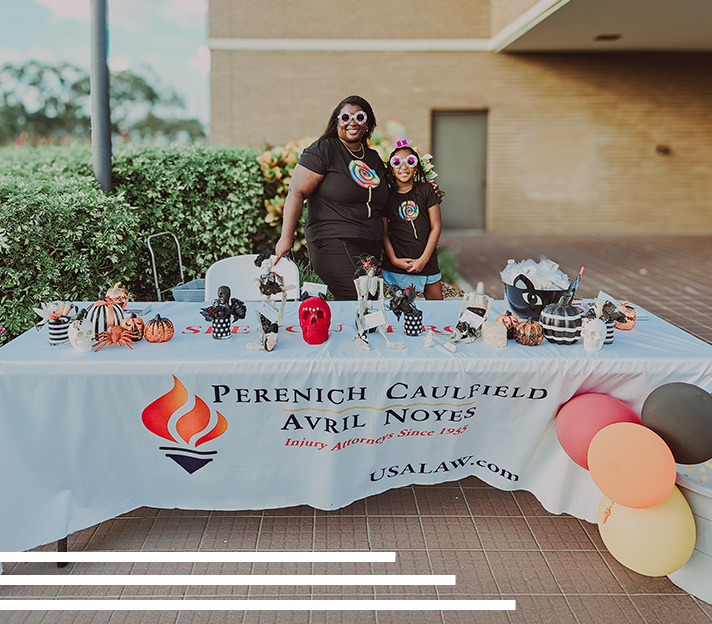How Long Will It Take My St. Petersburg Personal Injury Case To Settle?
How long does a personal injury lawsuit take? Settling a personal injury case can take weeks, or it can take years. There is no formula for how long it will take to settle any particular personal injury case. That depends on a great many factors. It is possible, however, to identify the factors that exert the greatest influence. That might allow you to “plug in” the facts of your case to reach a ballpark estimate of the time it might take you to reach a settlement.
It is worth noting that if you are filing a Personal Injury Protection (PIP) claim in response to a car accident where your damages do not exceed $10,000, your claim will proceed considerably more quickly than the process described below.
Phase 1: Wait Until You Reach Maximum Medical Improvement (MMI)
Maximum Medical Improvement (MMI) is the point during your treatment when you have improved as much as you ever will. In other words, your doctor doesn’t expect you to get any better no matter what you do.
In a best-case scenario, this means you recover fully. On the other hand, you might suffer permanent disability. You might even need continuing medical treatment, such as kidney dialysis. Reaching MMI typically takes a few weeks, although it could take longer.
Simultaneously: Prepare Your Personal Injury Claim
You can save time by spending the time you are spending waiting for MMI for a second purpose: investigating and gathering evidence for your claim. You will need to collect the following information and gather evidence for it:
- The place, date, and time of the accident that injured you;
- The exact sequence of the accident, to the extent that you are able to reconstruct it;
- The names and contact details of any eyewitnesses;
- A description of your injuries,
- The name of your healthcare provider;
- Details of your or the at-fault party’s liability insurance coverage;
- Proof of your lost earnings and other out-of-pocket expenses; and
- A report from an expert witness if your case involves a complex claim such as medical malpractice or wrongful death.
Your evidence might include recorded interviews with eyewitnesses, photographs, a police report (if any was prepared), your medical records and bills, your insurance policy or the insurance policy of the at-fault party, documentation from your employer, and more. With occasional exceptions, your evidence needs to comply with the Florida Rules of Evidence.
This process typically takes a few weeks if you have a qualified St. Petersburg personal injury lawyer to help you.
Phase 2: The Negotiation Stage
Let your lawyer negotiate your claim for you. The other side will probably be an insurance company, and insurance adjusters are professional negotiators. If you have an attorney to represent you, you’ll even the playing field with the other side.
Once you hire a lawyer, they can contact the other side and tell them to direct all further communications to your lawyer. Any further direct contact with you then becomes harassment.
The entire negotiation stage could last anywhere from a few weeks to a few months. The goal is generally to arrive at a settlement agreement that makes you whole again as best as possible – but your aims might be different. It’s really up to you – with legal guidance and help from your attorney – whether you wish to proceed to litigation.
Phase 3: The Litigation Stage
This is the stage where you take your claim to court. This doesn’t necessarily mean you’ve given up on eventual settlement, although you might want the other side to think you’ve given up. Taking your claim to court can accomplish at least three purposes:
- It puts psychological pressure on the other side, especially after the judge sets a trial date.
- It complies with the statute of limitations deadline to file a lawsuit. Once you file a lawsuit, you have permanently beaten the statute of limitations, no matter how long your lawsuit takes.
- It qualifies you to participate in the pretrial discovery process (see below).
The first step in the litigation process is to file the lawsuit.
Initiating a Lawsuit
Take the following steps to initiate a lawsuit.
- Filing a formal complaint. The complaint is a powerful legal document that you must draft with precision. Ask your lawyer to draft it for you.
- Paying the filing fee.
- Arranging for a neutral third party to deliver a summons and a copy of the complaint to the defendant (known as “service of process”).
The defendant will need to file a formal answer to your complaint within 30 days to avoid a default judgment.
Filing Motions
A motion is a written request for the court to do something. That might mean a motion to dismiss the case, a motion to suppress evidence, or a motion to change the venue of the proceedings, among other possible motions. This happens during a window of a few weeks between the time you file the lawsuit and the trial date set by the judge.
Participating in the Pretrial Discovery Process
The pretrial discovery process is a great way for both sides to gather out-of-court, under-oath evidence that is in the possession of the other side. You may seek four major types of evidence:
- Depositions: Testimony from hostile witnesses, elicited by out-of-court cross-examination.
- Interrogatories: Written answers by one party in response to written questions from the other side.
- Requests for production: A demand that the other side produces physical evidence for inspection or documents for copying. Even the human body constitutes “physical evidence” that can be inspected.
- Requests for admissions. Every fact must be either proven or admitted. Each side tends to cooperate with the other to admit facts that the other side doesn’t want to prove. This helps limit the scope of the trial to the important issues in dispute.
If the other side refuses to cooperate, you can motion the court to compel them to do so. The discovery process usually takes a few months, but sometimes it takes up to a year. Nevertheless, in a best-case scenario, it can yield so much evidence that the opposing party will respond with an immediate and generous settlement offer in order to avoid trial.
Phase 4: The Moment of Truth
Once you have filed a lawsuit, gathered all of the evidence that is available to you, submitted evidence in response to requests from the other side, and tried to negotiate a settlement, your case comes down to whether you will settle or go to trial. A brief description of both options follows.
Final Settlement
Once the two sides agree on the terms of a settlement, you will need to draft a written settlement agreement that binds the other side to pay the agreed-upon settlement and binds you to abandon any further claims regarding the same accident.
This should take a few days at most. Once both parties sign, it becomes a binding legal contract. If the defendant refuses to pay, you can sue them in court on a contract claim.
Trial
If you cannot settle your case, a trial might be your only option. Most trials only take one day (or less) to complete.
At trial, you must select the jury through a competitive process, give opening statements, examine and cross-examine witnesses, present evidence, give closing statements, wait for the judge to give jury instructions, and wait for the jury’s verdict. If you don’t like the verdict, you have 30 days to appeal it.
Let Your St. Petersburg Personal Injury Lawyer Handle Your Claim for You
If you try to settle your personal injury case, the party you negotiate with will probably be an insurance adjuster. This is not good news if you are representing yourself because insurance adjusters are professional negotiators. Luckily, so are personal injury lawyers. Contact Perenich, Caulfield, Avril & Noyes Personal Injury Lawyers their skilled St. Petersburg personal injury lawyer might be able to multiply the amount of compensation you receive. Call us at (727) 591-3354 today to get a free consultation.

We treat you like family.
If you can’t come to us, we’ll come to you.
Representing Accident Victims in Tampa Bay since 1955



-
“Friendly knowledgeable and kept me informed about my case. Any offer, bill or question was readily answered. Would definitely recommend and refer people to Bryan Caulfield and his team!!”- Betty B.
-
“Mrs Bryant works her butt off to make sure you get what is do to you in medical and beyond! They won’t take your case if they don’t feel you haven’t been wronged.”- Christine R.
-
“Working with Mark Perenich on my auto injury case was an absolute game-changer. From the very beginning, he brought a level of professionalism, expertise, and care that immediately put us at ease.”- Kerry B.
-
“Lorrie and Allyson are phenomenal. I highly recommend them to anyone. It seemed like a never ending journey but I can’t thank them enough for diligently fighting my case with the greatest integrity, support and prayers.”- Former Client
-
“From the first day we met this law group I felt very comfortable and knew we would be well taken care of. This was our first experience filing for SSD, and was not disappointed. The lawyers are awesome and very professional.”- Shari J.
-
“Very nice they worked with you. Never ignored me with my case. Always on top to work with you. Thank you so much for all that you have done to help me! Very highly recommend.”- Margarita O.
-
“My appointed attorney was Jacqueline, Bryant. She is very compassionate about her client and work. When it comes to negotiation, she's a Beast and she gets the job done.”- Alaina J.
-
“What was particularly awe inspiring was the recall of facts and testimonies from medical personnel that Para Legal Ms. Josephine Elizabeth Angelo was able to make. Her memory and acumen for detail was admirable.”- Maylisa Y.
-
“Wonderful, impeccable, personalized, authentic, truthful, honest experience. Rare, real, and human firm.”- Sheryl G.


We’ve been proudly serving Clearwater, St. Petersburg, and the Tampa Bay area for generations. As the first personal injury law firm in Clearwater, our dedicated legal team brings over 300 years of combined experience to each and every case. If you’ve been injured and need support, please reach outtoday for a free consultation, we are here to help you.















